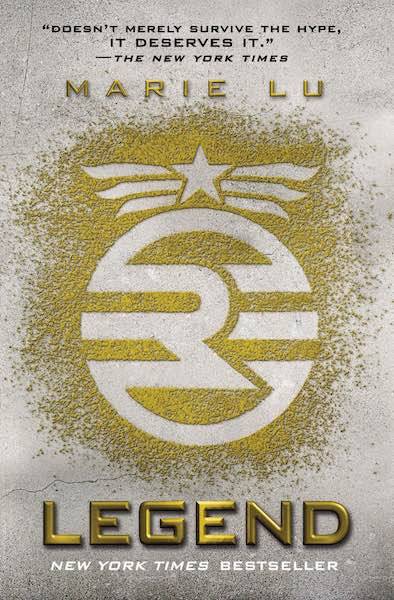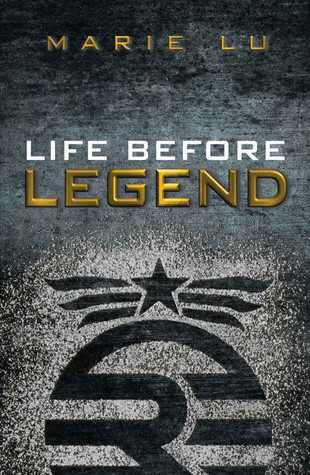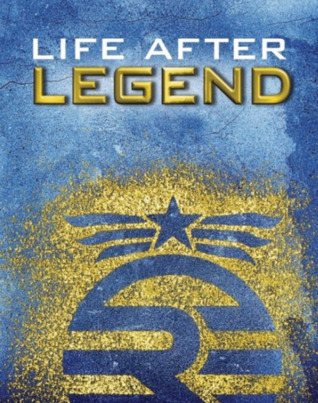#i thought Anden up while in the car the other day and I really like the dynamic offered between these two
Note
❛ i shouldn’t allow myself to get this close to you. ❜
Some In the Deep of the Trees for you cammie! Anden is a new character less than four days old (lmao); we’re going to see if his name sticks but I thiiiink it will for now.
{ subtle smut sentence starters }
🖤 Titus & Anden 💦
“I shouldn’t allow myself to get this close to you,” Anden remarks. He tilts his head to the side, long fingers playing against the lip of Titus’s shirt.
“Why?” Titus replies. His voice is sinuous, lapping through the dark. One hand is curled in the other man’s honey-blonde hair, holding him there like an animal caught in a trap.
“As if you aren’t aware,” Anden scoffs. “I wouldn’t be in this mess if I hadn’t gotten too close in the first place.” Anden meets his gaze, hazel of the sun shearing through the height of the trees Titus has only dreamed of. Blue crystal lights around his irises, a sapphire flame, and Titus thinks of the sky and the rumors of its vastness. “Besides, if I’m not careful enough, I think you might just eat me alive.”
It’s Titus’s turn to scoff this time, trenched with derision. Anden’s pupils darken as Titus lengthens the cut of his nails in his hair, sharp above the nape of his neck.
“I have no reason to devour you, Anden,” he says. “Your death would serve me no purpose. All my leverage upon you is linked to your breathing life.”
“True enough,” Anden replies, “but you may devour me yet.”
“I may,” Titus agrees, black with velvet and the serration of a knife, weighted and sure. “You’ve demonstrated it already before. You’ve no sense of self-preservation great enough to stop me.”
He kisses Anden full on the mouth, consuming. Anden meets him with vigor, one hand reaching up to lance itself through the decadent fabric at Titus’s back. It’s stripped away under the presence of the droonlight, Titus’s bare back a broad thing, dark amber rippling over muscle as he rests on his knees above Anden upon his bed, buried in him deep as Titus pins him down by a hand at his neck and the small of his back. He fucks him violently, no kindness in the action of it, not even a petal left to be shredded. Anden bucks back against him, the onslaught laid over him like rot, air punched from his lungs as he gasps and fists the abyss of the sheets, silk snaring between his fingers.
When he reaches for himself, pawing back between his legs, Titus tears his hand away with a snarl, gathering them both at the small of his back and forcing Anden down further, mouth popping open as his cheek is pressed against the bed.
“You’re a prick,” he gasps, vitriol slit through his tone like vinegar.
“You’ll come from my cock or not at all,” Titus growls at him in response, jarring Anden up the bed, sheets skewing under his knees. He ruts against him, sweat gathering and dripping down his back, against the length of Anden’s spine, and Titus grips his wrists tight, his other hand smothering in Anden’s pale lychee-honey hair.
He’s made Anden come this way before, untouched and throbbing. He’ll make it happen again. Anden had tried to wield control over him before, secrets lauded against his ribs to feather free across the shadows of the court, and Titus had taken it from him with his own tools—poisons and blackmail and carnal hooks. The only control between them now belongs to him, and Titus will keep it that way, tied tight in his grip like Anden’s breath as he gasps beneath him, fraught through and rippling with arousal and rebellion and dependence.
Anden is right, after all. He did get too close, and now he spends each day living on the tenuous rope of the consequences of his own blind actions.
#aninkwellofnectar#oc: titus#oc: anden#in the deep of the trees#my writing#asks#i thought Anden up while in the car the other day and I really like the dynamic offered between these two#blackmail galore
11 notes
·
View notes
Text
The Legend Series
The Legend Series is yet another series I received for Christmas years ago and never finished. This break, though, I finished it in what quite possibly could be a PR for time it took me to read a series. I started the books on a Friday evening and was done with the series by Sunday afternoon. Marie Lu wrote a riveting saga of strength with characters wholly unafraid to stand for what they believe in.
*SPOILERS*

The first book in the series, Legend, is a strong start, though not perfect. I’ve technically read this book twice before, once as a physical book and the other as an audiobook during a long car ride, so I may be overly critical of my reading this time around, since I don’t typically re-read books, but I found parts of the story to be unnecessary. This may just be coming from my perspective as an “older reader” instead of a young teen, but I found Marie Lu did the characters a disservice by making them 15. The age itself is fine hypothetically, but the emphasis on the romance at times, especially toward the end, felt forced between the two characters and I think, at this point in the series, it would’ve made more sense for them to be just friends. I thought the author wrote June’s loss of innocence surrounding the world she grew up in very well and I truly felt for the girl who had to watch her world crumble around her, bit by bit. I did appreciate the Les Miserables analogy throughout the story, with the June realizing that there may be more to Day than she thought. I also enjoyed Tess’s characters and, briefly, Metias’s, though I found Tess to be a bit one-dimensional at times. Overall, I found the book enjoyable and thought it was a good start to an interesting series.
Favorite Quote: Each day means a new twenty-four hours. Each day means everything's possible again. You live in the moment, you die in the moment, you take it all one day at a time.

I found Prodigy to be an improvement overall from the first book (not that the first book was inherently bad in any way), but I still had some gripes with some of the plots Lu chose to explore. I really enjoyed the politics aspect of this book, with Anden’s utter desperateness to succeed as a ruler and the double crossing of the Patriots by Razor, lying about who is funding this assassination. I had a feeling Razor was not the character he was believed to be for a while, but I never put two and two together that it was the Republic behind the scheme, but when Kaede explained everything, it all made sense, which I found to be a really cool plot point. Once again, the romance in this book frustrated me to no end. The romance between the deceased Metias and Thomas seemed more like a throwaway gay couple than anything of significance, especially since Lu did not explore their relationship as anything other than friendship in the first book, with Thomas even flirting with June (though it was implied that that was all a ruse to keep her safe, but I found that a feeble excuse). It was intended to make us feel worse for Thomas and the “sacrifice” he made for duty, but it instead just made me more sad for Metias. Tess’s sudden love for Day seemed super random as well, especially since they were basically surrogate siblings for each other for years, and, at the end, June’s and Day’s break-up of sorts seemed overly formal for being fifteen-year-olds who had only known each other for a month or so. Prodigy was definitely a page turner, but aspects were still frustrating to get through as a reader.
Favorite Quote: My heart is ripped open, shredded, leaking blood. I can't let him leave like this. We've been through to much to turn into strangers.

Champion was a satisfying conclusion to the series (though I haven’t read Rebel yet, the newest book in the series). Eden’s character was sweet and it was exciting to see him as an actual character for the first time, and not just a sick child that Day constantly thought about. I appreciated that the Tess romance thing got resolved in this book, but Anden’s love of June was creepy to me, considering the age difference, and in the epilogue, I found it weird, but not unexpected, that the two of them dated, though I was glad they broke it off. Day’s illness throughout this story seemed out of place as a plot point for me, especially since it took five years for it to really develop, but I was glad he wasn’t “perfectly cured”, after getting shot. I’m not sure if Lu meant one of those last few chapters as an homage to Les Miserables, but June’s repeated pleads of “let him live” are in the song “Bring Him Home”, which I found to be a nice Easter egg in the story, whether intended or not. June being the cure made sense in a way, but I don’t understand how she got better completely. It’s implied that the colonies gave her some sort of cure and took the virus to spread, but how they got hold of a cure seems fishy to me. In the epilogue, when June sees Metias’s grave and says that they’re finally the same age, I teared up a bit. I can’t imagine having to come to terms with effectively outgrowing someone lost far too young, and I thought the author described her grief really beautifully here.
Favorite Quote: That's why I'm sorry. I'm sorry because you shouldn't have to be everything to me. I had you, but I'd forgotten that I had myself too. It's a new feeling, something I'm getting used to.

Okay, I know this is an unpopular opinion but this was my favorite book in the series. Although I found June and Day more compelling characters than Eden and Day in this book, I thought this story was so much more poignant and had a much more complicated and interesting villain. Ross City was fascinating and the class divide present there held such poignant implications about technology and so much more that I thought it was a much more interesting and complex setting than the original trilogy. Eden and Daniel's (still weird to refer to him by that name) bickering was tiring at times, but their relationship as siblings was really touching and I thought it brought out an interesting perspective of both of the characters. I didn't love Pressa at the beginning, but toward the end, she was such an interesting character and I loved her and Eden's dynamic. The very ending of the book was so so so good and definitely made me tear up a bit. I was wary coming into the book that I would just find it a totally unnecessary addition to the series but I actually really enjoyed it and I thought it added to the overall story (though I did miss June's narrations).
Favorite Quote: There is nothing to figure out, there is no how or why. Sometimes things just happen.
*END OF SPOILERS*
The Legend Series started out as an interesting, updated take on Les Miserables, but quickly evolved into something much more. Though not my favorite series in the whole world, there was never a dull moment and I’m really looking forward to reading some of Lu’s other works, hopefully finding them as immersive as the world of the Republic!
Rating: ⭐⭐⭐⭐
Books in Series: Legend; Prodigy; Champion; Rebel
Author: Marie Lu
BONUS REVIEWS

Life Before Legend is a duology of two short stories surrounding June and Day prior to the events in the Legend series. I much preferred June’s story to Day’s and found that her story had more heart to me and was more interesting. It was cute, but I found largely unnecessary, but still enjoyable nonetheless. Fun for lovers of the series!
Favorite Quote: Someday, someone out there will see you for the girl you really are. Someday, you’ll find someone who understands you.

Fun to see the epilogue of Champion from Day's perspective. Not a ton of new info but definitely a cute little story that fans of Legend will enjoy.
Favorite Quote: I loved you. I love you still. I want to be with you.

Really short but sweet nonetheless! It's nice to see June and Day together again with his memory mostly intact. Like the other Life After Legend story, didn't offer really any new info but it was exciting to see the duo interact once more, however briefly.
Favorite Quote: Your past is forever part of you, just as it is a part of me. And I loved that person, just as I love you.
Bonus Books: Life Before Legend; Life After Legend; Life After Legend II
#legend#prodigy#champion#marie lu#the legend series#certified nora review#four stars#life before legend#life after legend#life after legend ii#rebel
4 notes
·
View notes
Text
The Curious Case of De Nga
The Curious Case of De Nga
View from the ridge above Longdo Nye (Panch Pokhri) lakes
Explorations on the watershed between Lachen chu and Ringi chu, North Sikkim
Text: Anindya Mukherjee Photos: Aloke Kumar Das
It was the third week of November,2015 and Kolkata was showing no signs of cooling down. Autumn was clearly gone and winter was still hesitating to enter into our space. Being gangetic, we understand this. Winter and Bay of Bengal are eternally engaged in a ‘cold’ war. Just like us Bengalis, they do not agree with each other- ever. But I could see and sense from experience that the weather pattern in the eastern part of the Himalaya was moving towards a clearer, stable state. News of new snow on the ridges of Singalila was bringing promises. I was getting restless. Long time, no mountain! And suddenly a plan was in the air.
As soon as the plan did surface, I met Aloke Das, my companion on Nanda Devi East in 2013[1]. I knew, Aloke, a senior mountaineer of Bengal belonged to a very different school and was new to this style I was about to propose. Preposterous, exploratory climbing is not blitzkrieg! Perhaps that will be his remark, I thought, but secretly hoped that he would be game. I said, 8 days and that is all we got in order to crack this thing and come back. We shall have to force our way through dense forest and rhododendron thickets right from the river bed, climb steep slopes covering nearly 1000m a day while sleeping under overhang rocks. There will be fewer leeches at this time of the year but be sure to expect plenty of deer ticks. But the good thing is the threat of ticks will be for the first 2 days only and then on the 3rd day we should be able go above the tree line and get near this 5000m mountain. And finally, if we do get there and if the weather gods are kind, we will try and climb this thing. I paused and looked at him. My old pal was smiling and I knew what that meant. Reassured, I resumed.
We shall have only one day at our disposal to climb. No rest days, no bad weather allowances. Since we will be starting our hike from a very low altitude of 700m approximately we should not worry too much about acclimatization I guess. But since time is of the essence and the approach march cannot be shortened really; we get only one shot at it. By the way, did I mention that I do not know what this mountain looks like? To be a little more specific I do not even know if this is a peak or a pass? Aloke seemed lost now. Lost but not surprised. There is not a single report or images published in any journal as presumably no mountaineer or trekker has been here. But in Kekoo Naoroji’s book ‘Himalayan Vignettes’ I saw a map[2]that referred to it as De Nga (5060m). ‘De Nga’ is definitely a Bhotia sounding name and must have had its influence from the inhabitants of Lachen valley lying to its immediate east rather than the Lepcha sanctuary of Dzongu that stretches to its south. In this map, it is shown on the watershed of Ringi Chu in Upper Dzongu and Lachen Chu. If you know where Lama Anden is then perhaps it will be a bit easier to imagine. It is on the ridge serpenting down south from Lama Anden (5868m).
Map with 'De Nga' peak marked
Toyoshima’s map shows this ridge in detail, but no peak named as ‘De Nga’ is marked here. What it shows instead in the same position are two passes with identical names-Thepa la. The northerly one is of 4575m and the other of 5064m[3]. Interestingly enough, this higher Thepa la is approximately in the same position and altitude as De Nga in Kekoo’s book. So, in short, the objective of this trip will be to locate De Nga and Thepa la and end this confusion of entity and title between peaks and passes. Pack your ice climbing gears nevertheless as we honestly do not know what to expect- a scramble or a climb. The meeting was over. I realized both of our smiles were turning into grins now. The glorious uncertainties of exploratory climbing in Sikkim have always been the ultimate lodestone for me. Now my old friend is about to get a taste of it. The spirit is contagious. If the medium is right it can pervade and permeate without much effort.
Map with Thepa La (two of them) marked
The very next week after this meeting took place, a drive of around 5 hours brought us to Passingdong, a tiny village in the lower reaches of Talung chu valley. Parties that trek to Kishong lake via Tholung gompa has to drive past this village and proceed a bit further to the west till the unpaved road ends at Be. From Be, they more or less have to hike up north following the Ringi chu keeping the Lama Anden- De Nga ridge to their east. Coming back to our trip, while driving up from Siliguri; we had a short stop at Mangan and bought food and fuel for the trip from the local market. Neither the overnight sleeper train from Kolkata, nor the drive from Siliguri was bad. It took fewer hours on the bumpy road than we had imagined. At this time of the year the roads of Sikkim had less traffic as Durga Puja and Diwali vacations were over and the towns were quieter again till Christmas. No sooner than we had lugged our bags down from the car my friend Mingdup Lepcha appeared and lent us a helping hand to carry them into his house. Mingdup has been a close friend since we had forced our way up the Talung gorge back in 2011[4]. That evening we poured over copies of maps and its contours. I tried to explain to Mingdup the curious case of De Nga and Thepa la. It turned out that Mingdup had never heard of De Nga, but the name Thepa la rang a bell. Soon after close inspection of his description we understood that Mingdup had crossed the northerly Thepa la (4575m) before. But never went up its higher namesake.
Mingdup also mentioned that further down south on the ridge there are several lakes. Lepchas call them ‘Longdho Nye’, which means ‘pond upon a rock’. This reminded me that Lepchas call themselves ‘Mutanchi Rong Kup Rum Kup’, meaning ‘beloved children of mother nature and God’ and they are the original indigenous race of the region. Lepchas have language, literature and script of their own. In fact, before the Tibetan rule in Sikkim and British rule in Darjeeling, the language of the whole region was the Lepcha. Even during the early period of the British rule all administrative works of the acquired land were carried out in Lepcha[5]. There is also another name for the lakes in Nepalese however these days and that is ‘Panch Pokhri’. There is a faint trail up to Panch Pokhri. This was good news as this meant we do not have to hack our way up all the way from Passingdong.
At the end of the discussion, with a deep and mysterious voice, Mingdup said to me, I knew you were up to something strange again. We all laughed. Mingdup’s remark however reminded me of Hercule Poirot’s statement in his last case Curtain. ‘Where you see a vulture hovering there will be a carcass. If you see beaters walking up a moor, there will be a shoot. If you see a man stop suddenly, tear off his coat and plunge into the sea, it means that there, there will be a rescue from drowning...and finally if you smell a succulent smell and observe several people walking along a corridor in the same direction you may safely assume that a meal was about to be served’. And soon we were all walking along the wooden stairs of Mingdup’s house down to the kitchen ourselves. A delicious meal was on the table. I felt thankful for all the wonderful friends these mountains have given me. The blessing of friendship is all I have.
Next morning Mingdup bid us good bye and wished us luck. He could not join us as a close relative’s wedding was up around the corner of his calendar. We wished him a grand time and healthy ‘chhang’ drinking advices were exchanged. We crossed Talung chu and the started hiking up. After an hour we passed a deserted looking small village called ‘Leekh’. Another couple of hours of steady uphill hike brought us in the realm of Sikkim’s dense forests. The foliage and flora resembled strikingly with central African rain forests. We toiled up for another couple of hours and as soon as we found a little clearing and narrow stream nearby, we decided to camp. Across the valley we saw the village of Lingthem. Interestingly, this was the same village where Geoffrey Gorer had spent three months in 1937. Gorer’s observations and comments are an invaluable contribution to our knowledge of the Lepcha community even today[6].
At night Mangan’s lights flickered in a distance below and across the Teesta. Next morning we were up early and after a quick breakfast we were back on the forest trail. In places it became hard to find our way as the undergrowth had everything covered. Not a lot of trekkers hike up to Panch Pokhri, we thought. After a gruesome 6 hours climb we reached the top of a ridge. Crossing the ridge we traversed up north for another hour and then next to a beautiful waterfall and below an overhanging rock we made our second night’s shelter. Firewood was collected, water from the stream was as clear as it could be; and soon we had a fire going. A quick meal followed a few rounds of tea and soon we all found our private sleeping spaces below the rock and prepared for the long night ahead.
Morning of Day 3 began to show a lot of cirrus cloud accumulation high up in the sky across to the west. Climbing through the scree of a dry stream we could see the NE flanks of Pandim (6691m) and its ridge extending towards Tinchinkhang (6010m), Jopuno (5936m) and Narsing (5825m) in the distance. At the end of the scree we reached the top of a sharp ridge. We figured, in Toyoshima’s map this point is marked as an unnamed pass of 3700m. We realized then that we were now on the ridge itself. On the same ridge further up north lies the higher Thepa la. We tried to see if we could spot a pass or saddle like feature from where we were standing. But our view was guarded by 3 rocky peaks. Further consultation of the maps revealed the these three peaks were respectively 4334m, 4593m and 4292m. They were obstructing the higher Thepa la (5064m) from us. To our immediate east was the deep valley of Rahi Chu. Looking alarmingly at the steady progression of the cirrus gathering we kept climbing north. Another good three hours of steep climb brought us higher up on the same but closer to the Panch Pokhri and we decided to pitch our tents. We were now just above 4000m. The evening transformed into a magical scene as the clouds decided to settle down in a low level stratus formation down the valley. The full moon appeared from somewhere over and above the mountain ranges of Tangkar la (4895m) and Dopendikang (5359m) to the east and south east. We knew just beyond that ridge was Chumbi valley. To our west were of course the great Kangchenjunga with all its majestic neighbour peaks. All the peaks in the map appeared before us. The peaks of the Singalila ridge starting from Talung (7349m) to the Kabrus (7338m and 7317m) lay to the furthest horizon. Proximal to that, were the peaks from Pandim (6691m) to Narsing (5825m). Then came the great east ridge of Kangchenjunga itself. We could make out distinctly the Zemu peak (7730m), the Simvu twins (6811m and 6812m), Siniolchu (6887m) and its Rock Needles (5712m). To add a sort of sense of completion to this map reading delight, the twin summits of Lama Anden (5868m) appeared further up north. We realized what a grand panoramic view point this was.
Next morning was a total anti climax to this. It seemed the valley clouds had an overnight change of mind and now they were determined to make life a little less rosy for us. It started snowing and within a couple of hours it was 4 inches deep. We knew we were pressed for time. We pushed further up north, along the ridge and as we got near peak 4334m, we dropped down to the east from the ridge and moving a bit further up north we decided to camp. We understood we were probably located a bit south of peak 4593m and hoped that this weather would change the next morning and if that happens we would climb peak 4593 and have a look at the higher Thepa la and the confusion of De Nga once and for all. The scheme seemed fine but the weather gods decidedly had other plans for us. It started snowing heavier that evening and continued all night. Morning brought no promises but 6 more inches of soft new powder. The intensity of snowfall lessened, but by then we knew that we were out of time. We packed our bags and wet tents and with a shrug of our shoulders headed back down. The curious case of De Nga remained unsolved. Well, until next time[7].
Observation: Approaching the problem of De Nga or Thepa La would be much easier from Lachen as the slopes are of easier gradient and almost devoid of the dense forest cover that one encounters while approaching from Dzongu. We also learnt ( and saw evidences) that the residents of Lachen do come in the vicinity of ‘Longdho Nye’ (Panch Pokhri) and the upper reaches of the Rahi Chu valley to gather Yarsa Gomba[8], not to mention the occasional poaching trips for Musk Deers and Himalayan Tahrs. This proved our presumption on the ease of access to this ridge from Lachen but increased our concern for the well being of the nature and wildlife nevertheless. We sincerely hope that the authorities of Kangchenjunga Biosphere Reserve will be a bit stricter in their regulations in near future as this area now falls under ‘Tholung-Kishong Conservation Zone’ as per a notification in the Sikkim Government Gazette Extraordinary dated 15 December 2006.
Postscript: Aloke seemed happy and satisfied with what we achieved as well. Well I will never know that for sure of course. As may be, deep down in his heart he is still screaming, didn’t I tell you so? Exploration climbing is not blitzkrieg after all!
[1] HJ 69 p.212
[2]See map 1, source: ‘Himalayan Vignettes- Kekoo Naoroji’, Page 232
[3]See map 2, source: ‘Sikkim Himalaya’ by Tadashi Toyoshima, 1977
[4] HJ 67, page 30
[5]‘Lepchas: Past and Present’- Dr. D.C.Roy, page viii
[6]‘Himalayan Village- An account of the Lepchas in Sikkim’-Geoffrey Gorer, First published 1938
[7]See map 3 for route described in this report
[8] Caterpillar Fungus, Ophiocordyceps sinensis, Chinese name: Dōng chóng xià cǎo, meaning ‘winter worm, summer grass’
0 notes